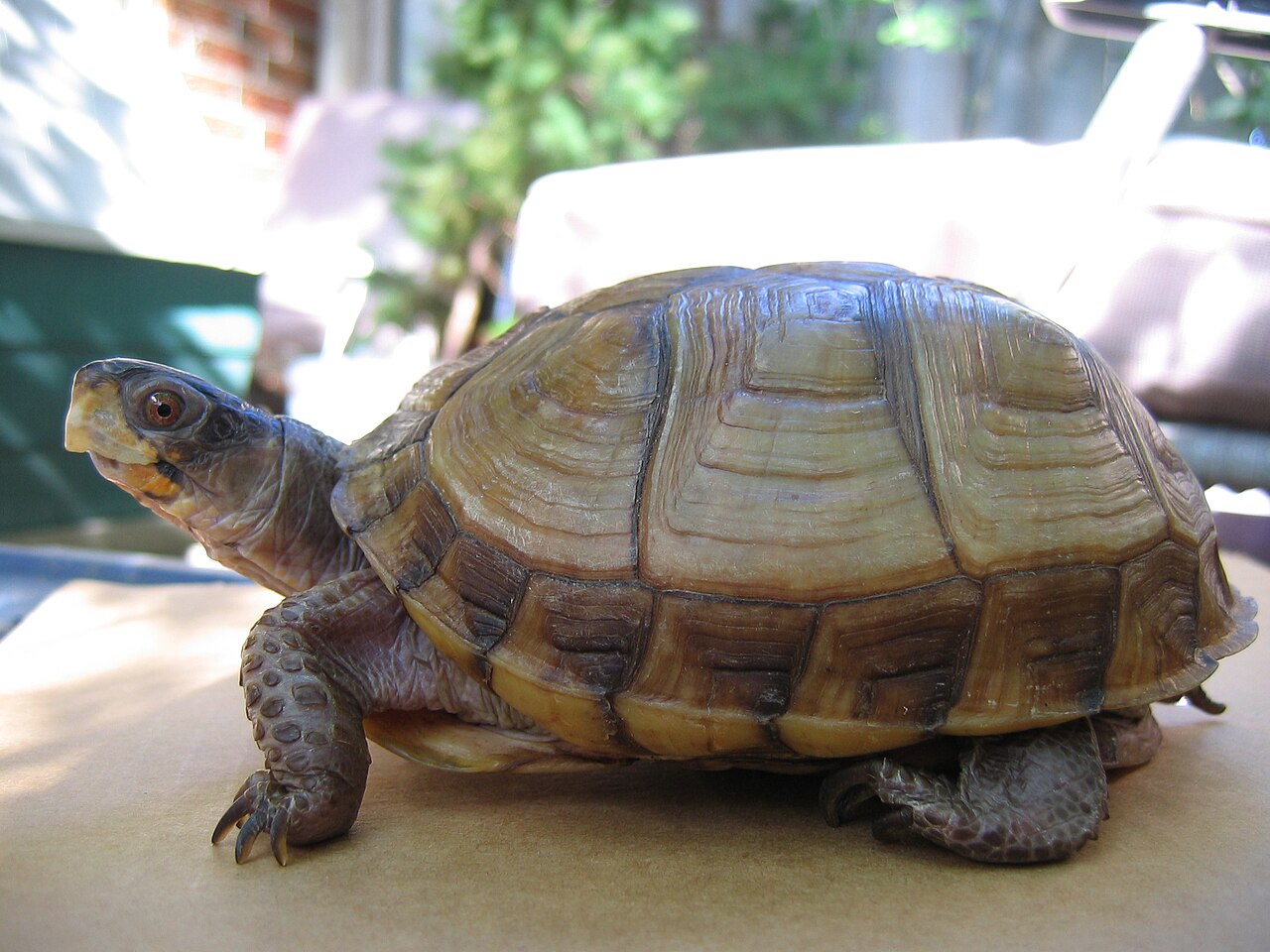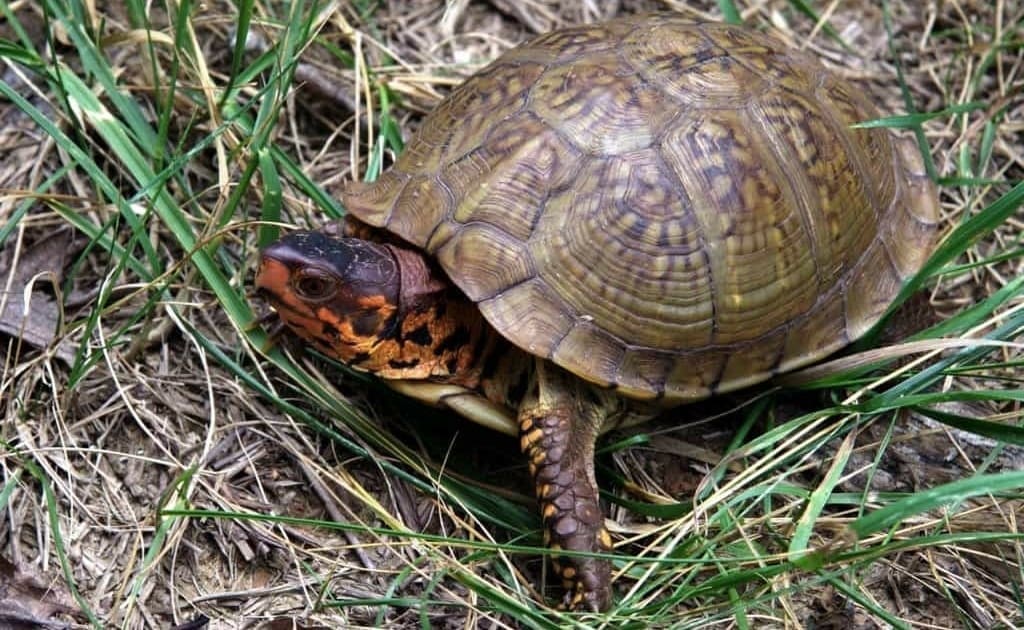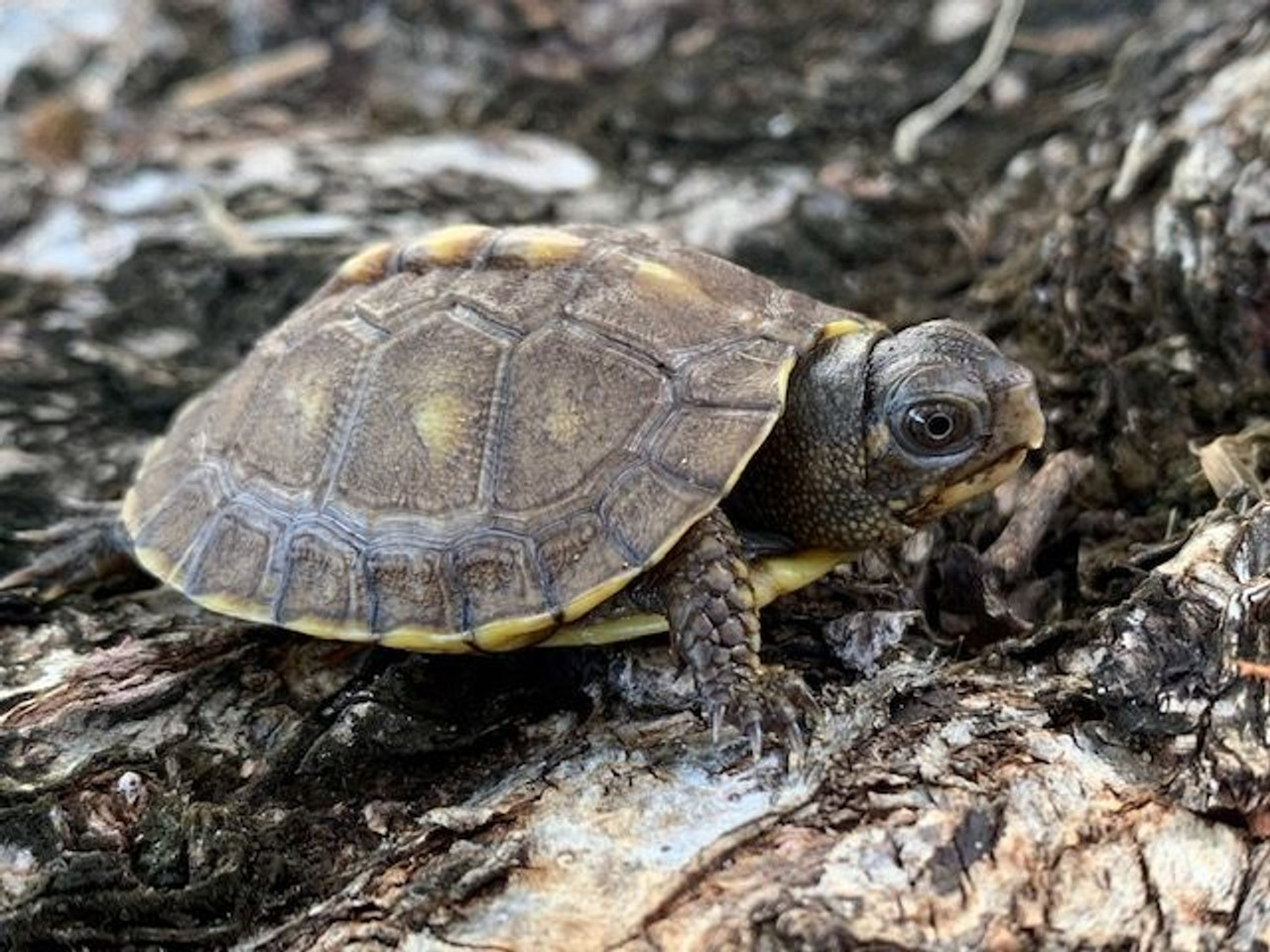
The three The three-toed box turtle (Terrapene carolina triunguis) is a subspecies within the genus of hinge-shelled turtles commonly referred to as box turtles. This subspecies is native to the south-central part of the United States and is the official reptile of the state of Missouri.[3]
The three-toed box turtle (Terrapene carolina triunguis) is a subspecies within the genus of hinge-shelled turtles commonly referred to as box turtles. This subspecies is native to the south-central part of the United States and is the official reptile of the state of Missouri.[3]
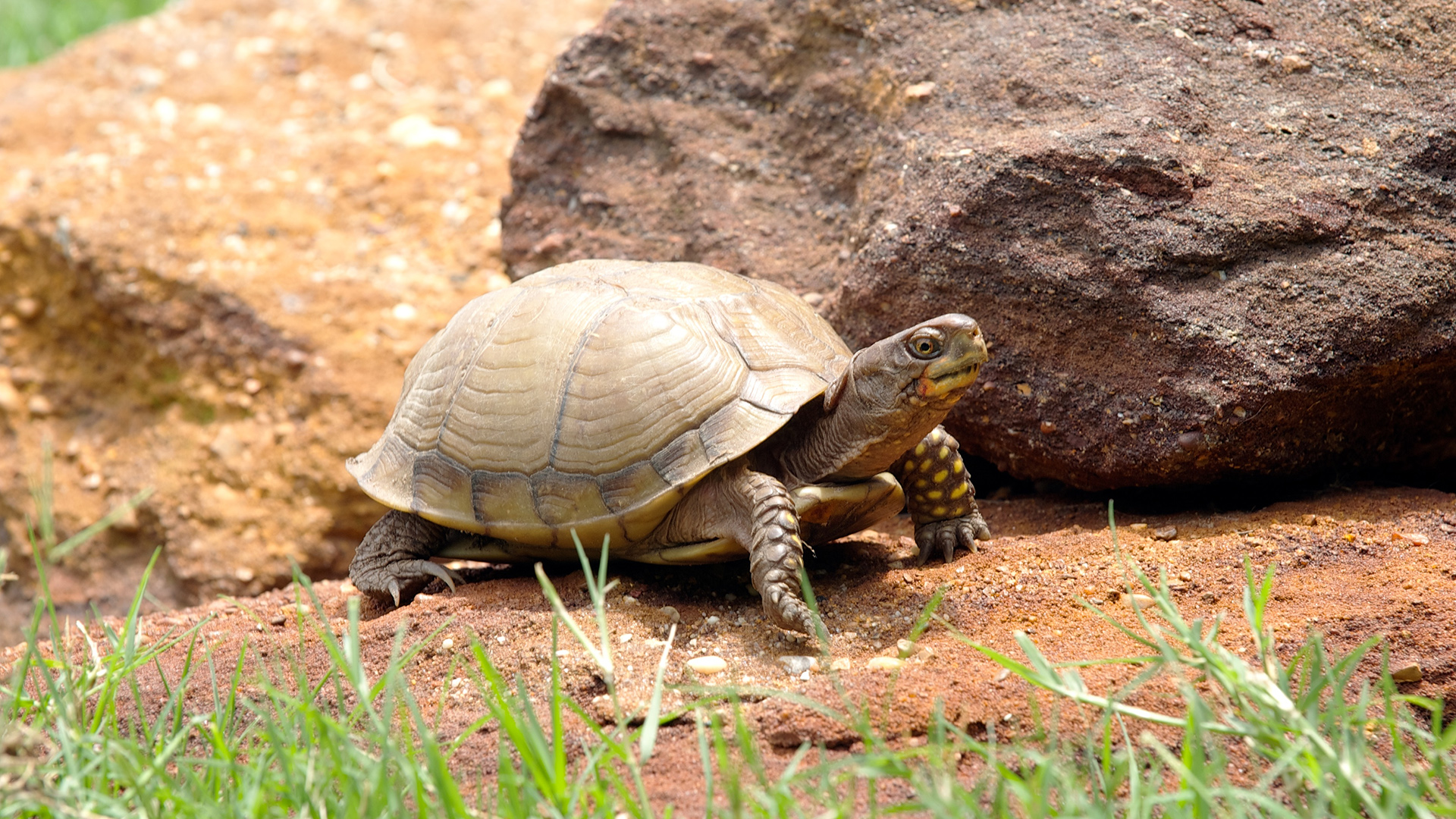
/GettyImages-128143805-5834b8145f9b58d5b1361040.jpg)
Three-toed box turtles are so named due to the number of toes on the back feet, but some think that there are some four-toed examples too. However, some speculate that the four-toed individuals are actually eastern box turtle × three-toed box turtle hybrids. Three-toed box turtles have a domed shell which grows to 5-7″ (13-18cm) in length.[4] The highest part of its carapace or upper shell is more posteriorly positioned than in any of the other subspecies.[5] The dorsal and limb coloration is commonly completely absent, although some dark blotches are common in adult turtles. These areas more often being a uniform olive green or tan color. Sometimes, faint yellow dots or lines are visible in the center of each large scute.[6] In the males, the head and throat often display yellow, red, or orange spots.[5][7] Frequently, the bottom shell or plastron is a straw yellow color, and has far fewer dark markings than the plastrons of the other subspecies.[8]
Distribution and habitat
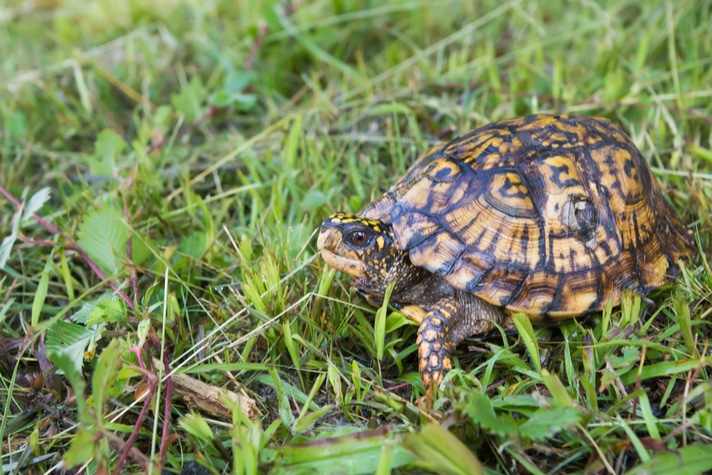
From the west to the east of its range, the three-toed box turtle can be found from eastern Texas to the northern edge of the Florida Panhandle. Its northernmost range is in Missouri and Kansas, while the southernmost one is in Louisiana.[9] Three-toed box turtles interbreed with other subspecies of common box turtles which overlap the borders of this area. An example of this occurs in the eastern Mississippi valley, where this species is difficult to distinguish from the eastern box turtle.[10] Being popular in the pet trade, three-toed box turtles are sometimes found well outside of their home range. It is not known whether such captives when released into the wild have any impact on the local species of such areas. These turtles are adaptive, and are possibly the only box turtle who can live happily in an indoor enclosure.[11]
Diet

Three-toed box turtles are omnivores, their diets varying with availability of food sources and the seasons. They are known to eat earthworms, insects, snails, slugs, strawberries, mushrooms, and green-leafed vegetation. They have been observed eating the eggs of quail. All box turtles will prefer live foods to vegetation.
It has also been speculated that these turtles eat poisonous mushrooms, but are not themselves sickened by the mushroom's toxins. Afterwards, the turtles then become poisonous themselves. Carr[12] believes this to be the reason why a group of boys in Mississippi became ill after eating roasted three-toed box turtles.
As pets, they have been reported to eat mealworms, corn, melon, crickets, waxworms, tomatoes, cooked eggs, fruit, and even moist dog food. Diet should consist of approximately 50% plants and 50% animal protein.[4] They can be shy about being watched while eating, and may stop and stare back motionless if this happens. Multivitamin supplement and cuttlebone for calcium are required as part of the captive diet.
Behavior
Three-toed box turtles are known to migrate seasonally in order to maintain their preferred humidity level. In Arkansas, three-toed box turtles were observed in grasslands in late spring, while in early spring, summer, and late fall they were found in forested areas.[13] During dry times, they dig shallow burrows into leaf litter to conserve moisture. When water is available, these turtles soak for longer periods of time than any of the other subspecies.[10]
Captivity

Three-toed box turtles require care similar to that of other box turtles, faring best in large, outdoor enclosures. These enclosures should have plenty of room to allow the turtle to burrow, but should also be protected to prevent the turtle from burrowing under enclosure fencing. Indoors, three-toed box turtles should be kept in a large wooden enclosure measuring 6’L x 3’W x 2’H, or otherwise offering roughly 18 square feet of space.
An indoor enclosure should have a high temperature side with a heat bulb at around 85 °F and a lower temperature side at 70-75 °F. Humidity should average between 60-80%. The enclosure should also contain at least one humid cave or hideout for the turtle as well as an area where it can soak. A T5 HO UVB lamp of appropriate strength is required for survival indoors. Peat moss, coconut fiber, and clean topsoil all make acceptable substrates. Desert materials such as gravel or sand would be too dry and difficult for the turtle to dig into, and will cause small scratches susceptible to infections. Many owners simply spray the surface area of the enclosure down at the beginning of the day in order to moisten the material and to increase the humidity of the enclosure.
With good care, three-toed box turtles are capable of living for at least 50 years.[4]



